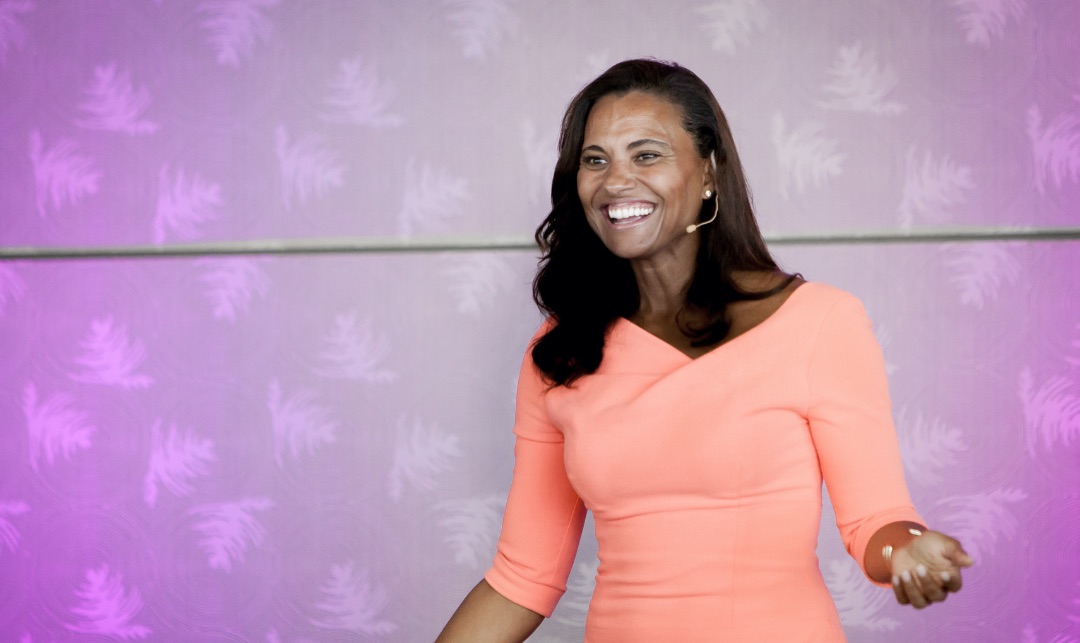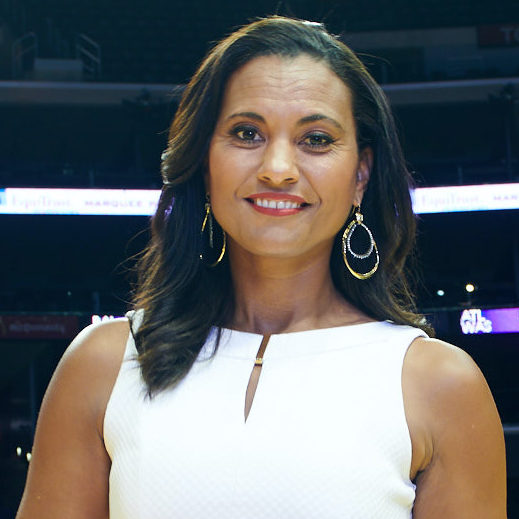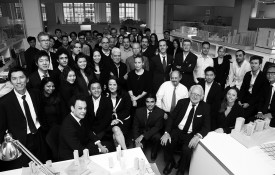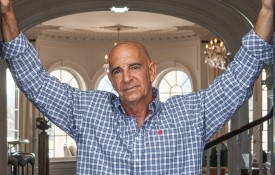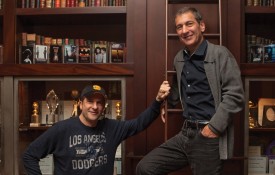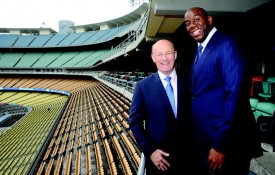Christine Simmons, COO of the Academy of Motion Picture Arts and Sciences, is no stranger to overcoming adversity in times of transition. After “failing” at her early dreams of becoming a college athlete and a doctor, Simmons discovered not only the strength that comes from changing paths, but also the purpose that lies just ahead of every pivot. A firm believer that failure is key to getting where you are meant to be, Simmons built a career she didn’t know was possible out of her passion for people—always keeping a keen eye on elevating through diversity, serving the underserved, and leveraging a platform to leave a lasting, positive impact.
Now, at a time when things seem more uncomfortable and uncertain than ever, this “mixed girl from Rancho Cucamonga” elegantly speaks necessary truth to power and reveals how her team at the academy is helping set the stage for a new season that we can all be hopeful for—guided by the principles of representation, inclusion, and equality.
From NBCUniversal, the Walt Disney Company, and the academy to Magic Johnson Enterprises and the L.A. Sparks, your career has intricately woven sports and entertainment together. What has your professional evolution been like?
I’ve definitely had a nontraditional journey in my career. But, through it all, I’ve had a love for business, operations, and changing trajectories. I look at the voiceless and the underserved, and I ask myself how we can best deal with those inequities. Sports, entertainment, and finance can each really help us change those trajectories in ways that other industries take longer to do. Driving operational excellence and helping monetize social impact in a way that is authentic and credible—that’s my passion.

Christine Simmons has been with the Academy since 2019.
Many of your nonprofit pursuits seem to focus on inclusivity, diversity, and empowering the minority youth of America. As we are currently witnessing a historic moment of demonstrations and conversation surrounding race and equality, are you hopeful about the outcome?
I’m hopeful. Cautiously optimistic, I’ll say. I think the narrative and positioning we’re seeing today—with folks who may not necessarily be affected by these institutionalized constructs of oppression and inequity starting to recognize them and still wanting to make a change—that is exciting. And it’s not because they have a mom, or a sister, or a Black best friend. It’s because it’s wrong. Period. That shift in the narrative, along with the boldness of where we are today in calling for a shorter runway for change, is why I’m really hopeful. Seeing organizations and leadership like ours being bold, confident, and strong in their desire to change what historically has been a challenge is inspiring. We’ve looked at what we have control over, what we can influence, and how we can use that to truly make a sustainable and impactful difference.
What does that action plan look like for the academy?
We recently announced Academy Aperture 2025, which is a holistic approach to increasing representation, inclusion, and equity in the industry. The name is intentional. We want to broaden the lens by which excellence is recognized and celebrated. It is so important, because brilliant stories are being left on the table. If we can broaden that aperture, we will lift our industry as a whole. We look at the eligibility for the Oscars and best picture. We look at viewing habits, and how those are contributing to some of the institutionalized constructs of the system. We look at how we can continue to help people view these stories year-round and democratize them in a way where they’re not always beholden to someone’s marketing strategy, if you will. We also look at our internal business practices and make sure that we, the academy, are walking the walk. It starts with changing hearts and minds with unconscious bias training. It taps into the tactical with eligibility requirements, and it reaches into our day-to-day business to ensure that all those areas, in addition to our library, museum, and archive collections, are representative.
How has the COVID-19 crisis impacted the academy and the landscape of film for the rest of 2020? Will there be an Oscars ceremony in 2021?
We can’t give out too many secrets … but yes, there are some necessities to pivot in this space. Our board and all of our committees are looking to help resume production responsibly. They have built a task force that brings together the best and brightest technological and scientific minds in the film business to look at how we can support our members as production resumes. As far as the show, there are plenty of exciting options on the table. But absolutely, yes. The show must go on!

Simmons with her son, Christian.
What are some of the challenges, efforts, and values that the public might not have visibility into when they are enjoying that night on TV?
Most people know us for the show, but there are so many more programs that encompass the academy. We have nearly 500 employees. They are building our museum, our library, our archives, and so much more. They are doing the work to preserve and celebrate this art. Our foundational programs, some of which have been around for decades, have been infusing the talent pipeline for years in phenomenal ways. Imagine, as a film student, being mentored by Spike Lee or Sterling K. Brown. Our Academy Gold Internship Program saw nearly 90% of the interns who came through earn jobs within the industry, and nearly 30% of those jobs were above entry level. We are on the front end of the pipeline, but we are also here to help welcome and celebrate artists on the other side. We talk about representation, inclusion, and equity daily at the academy, and championing those values has been listed as one of our business-critical priorities.
Looking at your professional and academic journey, Los Angeles seems to be a common through line. How did you choose Los Angeles, and how has this city influenced your personal evolution and the organizations you partner with?
This city has absolutely been a central point for me. When I think about what it meant to be a little mixed girl growing up in Rancho Cucamonga, I think of options. And exposure. My mom is a skinny white girl from Oregon, and my dad is this tall, dark-skinned brother from Pensacola. Diversity is in my blood. My mom raised us four girls on her own—“Arnita’s girls.” She helped instill in us our work ethic, fierceness, and independence, which were so important in shaping how we could attack the future. That said, once I moved to Los Angeles to attend UCLA, I was exposed to so much. Diversity. Opportunity. The ability to change trajectories. The cultures that come together here. That’s what I love about Los Angeles. The career, network, and opportunities it has brought me have given me visibility into the world outside of this place—in a way I might not have had access to if I lived in a small town. I am grateful for and recognize that privilege. I also love that L.A. can be a window, a vehicle, a mechanism to go anywhere and to do anything.

Simmons grew up in Rancho Cucamonga and then attended UCLA.
What leadership strategies, grounding philosophies or day-to-day habits do you believe contribute to distinguishing oneself and leaving an impact in business—especially in transitional times such as these?
The ability to bring calm to chaos, coupled with empathy—those characteristics in leadership, which used to be deemed soft skills, are so critical now. Especially with all of the intersectionality within our workforce today. But those come with a sense of self. A healthy self-awareness. I think it’s so important for every leader to know his or her effect on a room. That way, your message can be received the best possible way for sustainable change and impact. It is tough. It is nuanced. And it took me a minute. I had to learn and evolve. I had to check my ego and adjust my communication so it could be better received. I slowly began to embrace the concept of strength in grace. When I talk my colleagues and mentees through these types of things, I try to help them get there a lot sooner than I did.
What are those first steps? How and where can existing or aspiring leaders start to tap into their emotional intelligence, check their ego, and exercise empathy?
It springs from true self-awareness and a healthy self-confidence. You have to believe in yourself, first and foremost. Understanding your own triggers, and being in a good mental space, is important. When you are both secure and self-aware, your value or worth is not defined by your title or where you are at currently. It becomes about the impact you are making on somebody else’s life, which is exciting. But there’s a balance, right? Because there are still a lot of folks who aren’t seen, aren’t heard, aren’t given credit, and are being overlooked. As leaders, we have to find that balance to ensure we are giving visibility and a platform to everybody in equitable ways. I cannot stress enough the importance of the collective. There are plenty of individual accomplishments that people will have over the years, but we’re most powerful together.






































